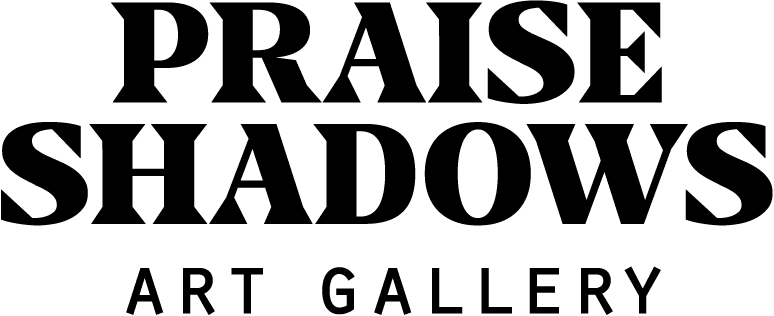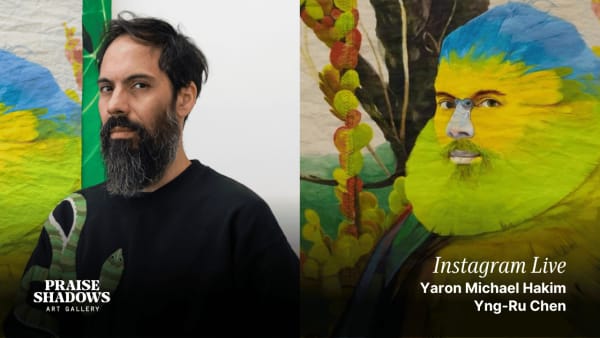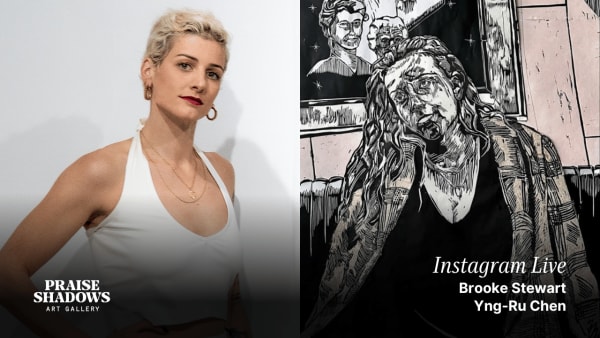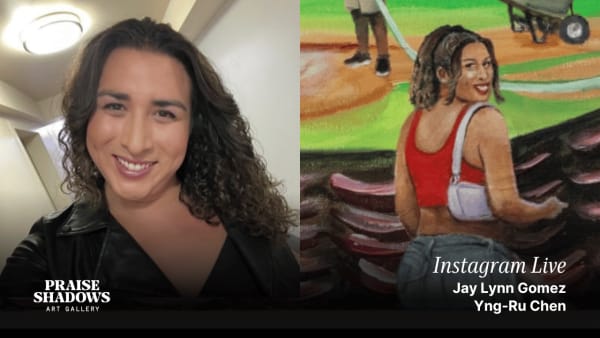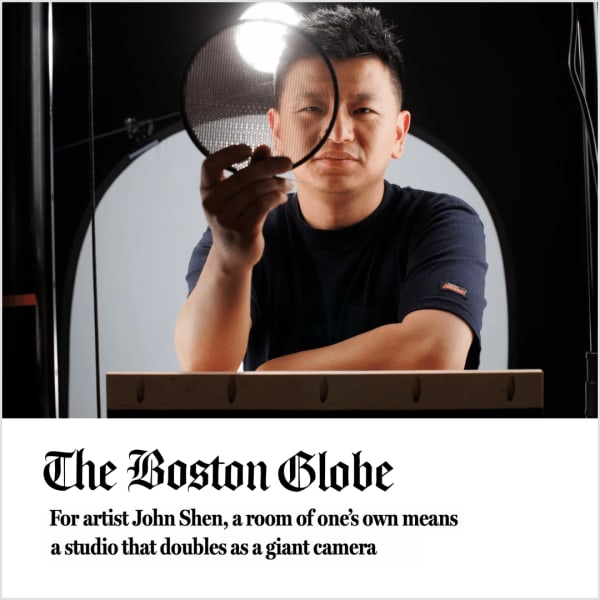See and Be Seen II: Group exhibition
Praise Shadows Art Gallery is thrilled to announce See and Be Seen II, a follow-up to our first-ever group exhibition from January 2021 about portraiture under a new lens. An intergenerational group of artists from Boston, Los Angeles, New York, and Vermont have been selected for the 2024 iteration: Jay Lynn Gomez, Yaron Michael Hakim, Laurel Nakadate, John Shen, Homer Shew, Pamela Smith, and Brooke Stewart. Artworks selected span painting, photography, woodblock prints, and papier-mâché sculpture.
Jay Lynn Gomez was born in California to undocumented Mexican immigrant parents who have since become US citizens. Her work is known for addressing issues of immigration and making visible the “invisible” labor forces that keep the pools, homes, and gardens of Los Angeles in such pristine condition. Gomez is represented by Charlie James Gallery, Los Angeles, and PPOW, New York.
Los Angeles artist Yaron Michael Hakim’s portraits depict imagined anthropomorphic creatures. He examines his South American heritage and the exoticization projected onto him. He's inspired by the quintessential parrot, the Macaw, which is native to South America, and thinks about how it's attributes of camouflage and ability to mimic vocal pitch can function as a metaphor for assimilation and living between cultures. Hakim is represented by Sargent’s Daughters, New York and Los Angeles.
An anchor body of work in the exhibition is The Kingdom by Laurel Nakadate. Her mother died when her son was eight weeks old and never had a chance to hold her grandson. In the months after her mother’s passing, Nakadate received emails from a stranger offering Photoshop services. This stranger insisted that they could fix anything, that they could make any photograph perfect. Nakadate began sending to this stranger photographs of her mother spanning the course of her life, and photographs of her newborn son. Her only direction was to place the baby in the woman's arms. The Photoshopped outcomes are imperfect and speak to the ways that photographs serve not only as space for possibility, but also as space for impermanence. Nakadate is represented by Leslie Tonkonow Artworks + Projects, New York.
Providence-based artist John Shen will exhibit a triptych of portrait photographs from his ongoing series Straw Inscriptions, a body of work that features one-off direct positive photographic objects, capturing moments of love, intimacy, and affection of his closest friends and family. The camera used for Straw Inscriptions was tediously assembled by hand-gluing approximately 28,000 individual drinking straws. By intentionally forgoing any optical elements, Shen embraces an exclusively analog approach to photography.
New York-based artist Homer Shew paints portraits of Asian Americans that are, in his father’s words, “improper subjects for oil painting.” As a Chinese American, Shew’s practice is subjective, and intimately deals with the re-aestheticization and de-caricaturization of Asian faces. The paintings included in the exhibition depict fellow artists who are deeply invested in showing their peers. Shew is represented by Kiang Malingue, Hong Kong.
Pamela Smith is an artist based in Vermont. She loves the physical act of painting, making colors, and the opportunity to leave herself for a time as she enters her work. In response to growing up in an externally unstable environment, Smith was compelled to explore her internal world, where she has found refuge, solace and sometimes joy. Painting and papier-mâché have given the artist a means to share that internal world with others. Presented in collaboration with Northern Daughters, Vermont.
Boston-based artist Brooke Stewart focuses on community, and more specifically, the communities she personally inhabits. Working in portraiture, she desires a moment to focus on the individual: who they are as a person, how they are vital to their communities, their roles in the inner workings of restaurant bars and kitchens, but also how they serve the public. Service industry workers are often utilized, but not seen. We taste their food, we eat from their plates, we enjoy their wine, but what do they do when they aren't serving us?
